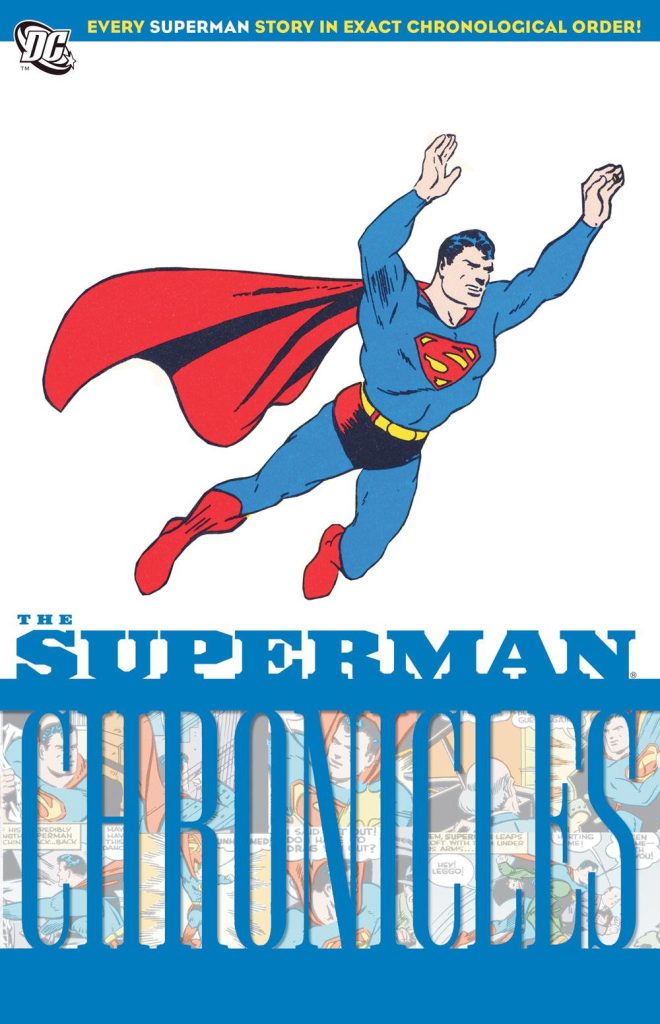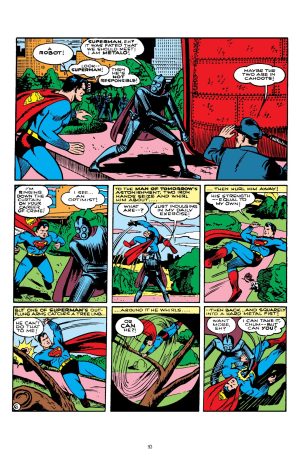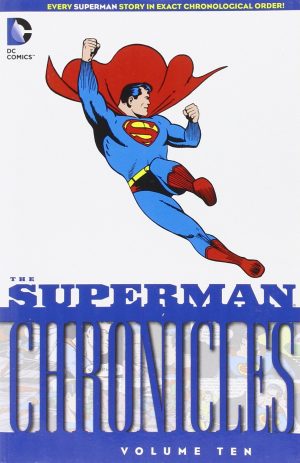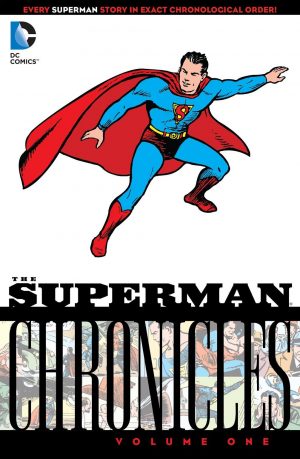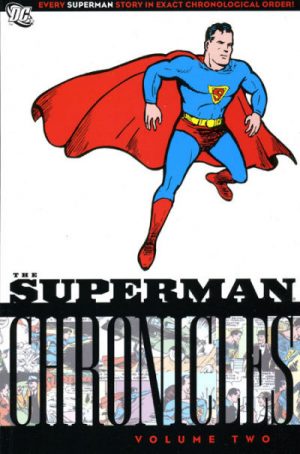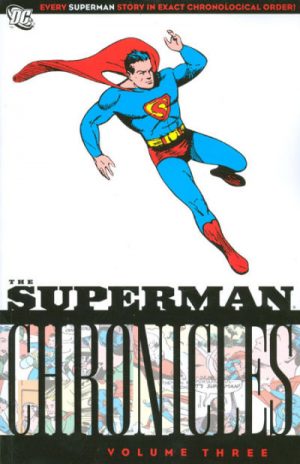Review by Frank Plowright
1942 was the fourth year of Superman’s publication, and it’s rare to see co-creator Joe Shuster drawing any strips as he concentrated on what was considered the greater prestige of the newspaper strip. John Sikela came on board early in 1942, as seen in Superman Chronicles Volume Eight, and he pushes the feature forward artistically. He can cover the civilian scenes of investigative reporters Clark Kent and Lois Lane poking their noses into the business of petty crooks, but he brings a new dynamism to Superman in action. He’s no longer cramped into nine small panels per page, but as seen by the sample art of Superman taking on Metalo, a panel occupying a third of a page is not unusual, and in other places Sikela uses half page illustrations.
Just as Sikela progresses Superman artistically, Jerry Siegel gradually introduces elements pointing toward the future. A now definitively bald Lex Luthor and his power stone return, and while Siegel’s had Lois wondering about Clark being Superman before, here he plots an entire story around that idea. Forgetting for a moment how common, formulaic and ridiculous such stories became, this has amusing moments and tricky problems with more realistic solutions. Regular costumed criminals are still some way off, but Metalo is a fleeting example, and the Prankster makes his return. Also introduced is the idea of Superman having a retreat, what he refers to as a secret citadel, carved out of a mountain inaccessible to anyone unable to fly. Taking his lead from the Superman cartoons, by the way, Superman is now flying. The secret citadel isn’t just an idea introduced and forgotten, but one that recurs.
In 1942, though, the mainstay of Superman in comics remains the human interest story. This generally involves innocent people whose lives are impacted by gangsters in neat crime dramas, but sometimes there’s no crime just one person’s story. An example is Clark and Lois discovering a phenomenal baseball pitcher and persuading him it’s worth his while trying out for the Metropolis team. He’d prefer to remain in the country as there’s work to be done on the farm. Clark and Lois are integral to the human interest stories, cast as plucky journalists confronting no-goodniks. Siegel makes sure, though, that whenever possible Clark avoids using his powers in his civilian suit, often leading to Lois considering him a coward.
Although the USA was involved in World War II in 1942, there’s only passing mention of it in Siegel’s stories, with the patriotism restricted to the symbolic covers by Fred Ray.
These stories are of their time, but remove the necessities of the era and they’re still readable as neat crime dramas with super-powered intervention, and that continues in Volume Ten. Both are combined as Superman: The Golden Age Volume Five, and everything is included in the third Superman: The Golden Age Omnibus. Individual stories are also separated back into their original runs for inclusion in Action Comics Archives Volume 3 and spread across Superman Archives Volume 4 and Volume 5.
